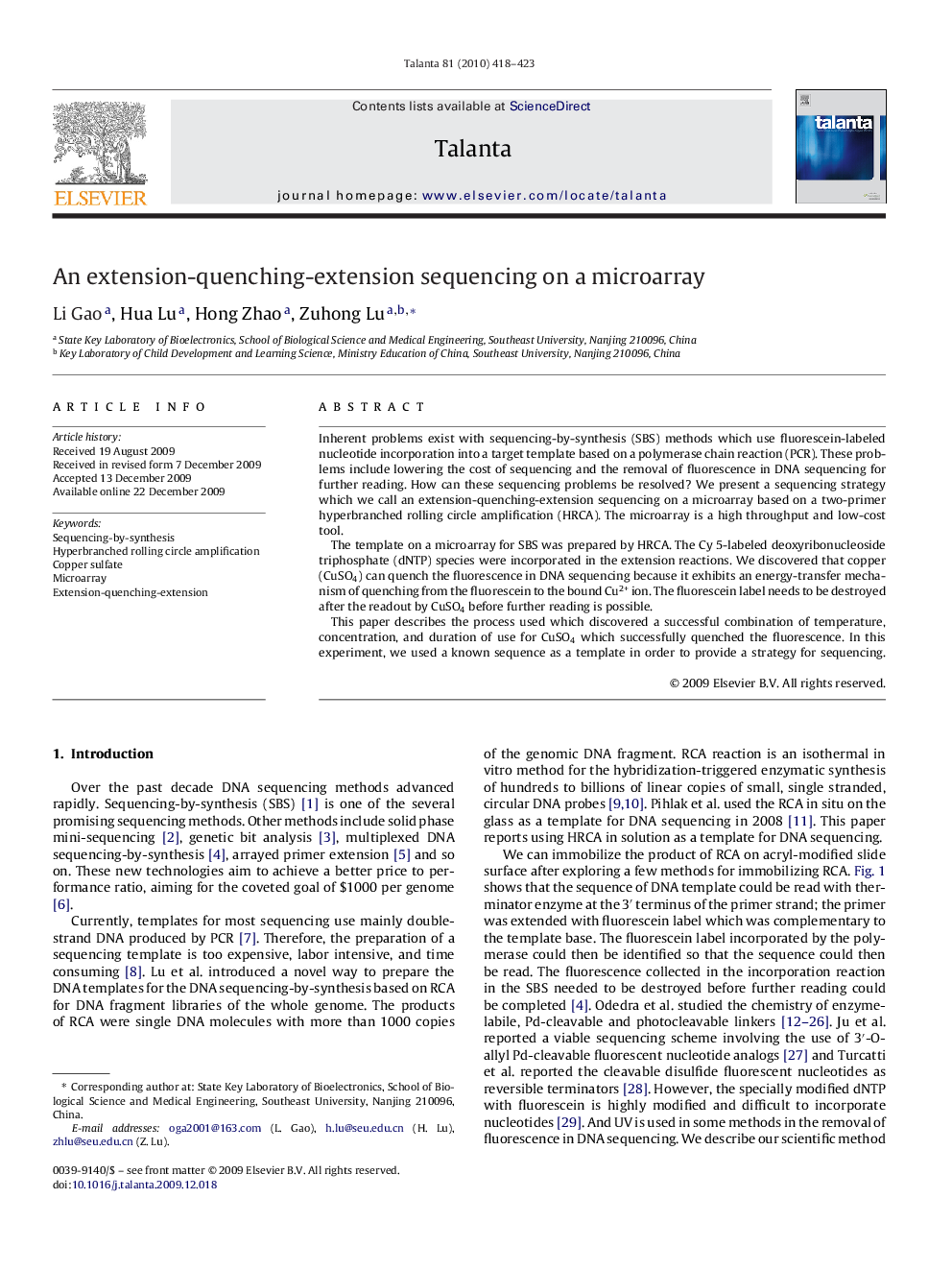| Article ID | Journal | Published Year | Pages | File Type |
|---|---|---|---|---|
| 1246665 | Talanta | 2010 | 6 Pages |
Inherent problems exist with sequencing-by-synthesis (SBS) methods which use fluorescein-labeled nucleotide incorporation into a target template based on a polymerase chain reaction (PCR). These problems include lowering the cost of sequencing and the removal of fluorescence in DNA sequencing for further reading. How can these sequencing problems be resolved? We present a sequencing strategy which we call an extension-quenching-extension sequencing on a microarray based on a two-primer hyperbranched rolling circle amplification (HRCA). The microarray is a high throughput and low-cost tool.The template on a microarray for SBS was prepared by HRCA. The Cy 5-labeled deoxyribonucleoside triphosphate (dNTP) species were incorporated in the extension reactions. We discovered that copper (CuSO4) can quench the fluorescence in DNA sequencing because it exhibits an energy-transfer mechanism of quenching from the fluorescein to the bound Cu2+ ion. The fluorescein label needs to be destroyed after the readout by CuSO4 before further reading is possible.This paper describes the process used which discovered a successful combination of temperature, concentration, and duration of use for CuSO4 which successfully quenched the fluorescence. In this experiment, we used a known sequence as a template in order to provide a strategy for sequencing.
